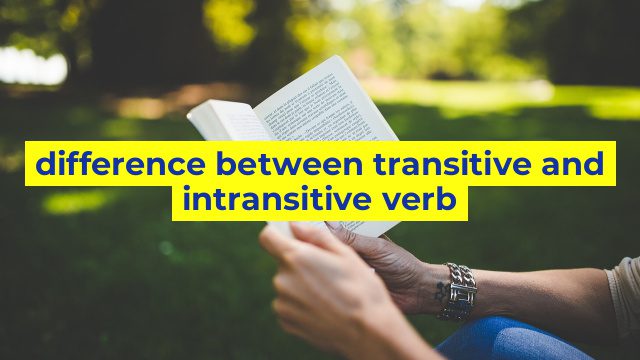The Difference between Transitive and Intransitive Verbs
Introduction
Verbs play a critical role in the English language, as they express actions and states of being. However, not all verbs are alike; they can be classified as either transitive or intransitive. Understanding the difference between these two types of verbs is essential for anyone looking to improve their English language skills.
What is a Transitive Verb?
A transitive verb is a verb that requires an object to complete its meaning. In other words, transitive verbs act on something or someone, and that something or someone is the object of the verb. For example, in the sentence “Sally kicked the ball,” the verb “kicked” is transitive because it acts on the ball. Without the object “ball,” the meaning of the sentence would be incomplete.
What is an Intransitive Verb?
An intransitive verb, on the other hand, does not require an object to complete its meaning. These verbs express an action or state of being that does not necessarily affect anything or anyone. For example, in the sentence “Jenny laughed,” the verb “laughed” is intransitive because it does not act on anyone or anything. The meaning of the sentence would not be incomplete even if an object were not included.
Examples of Transitive and Intransitive Verbs
Here are a few more examples of transitive and intransitive verbs:
Transitive verbs:
– She ate the pizza.
– He drove the car.
– They painted the room.
– I am writing a letter.
Intransitive verbs:
– She slept for hours.
– He walks to work.
– They laughed at the joke.
– I am waiting for the bus.
Conclusion
In conclusion, transitive and intransitive verbs may seem similar at first, but they have distinct differences. A transitive verb requires an object to complete its meaning, while an intransitive verb does not. By understanding the differences between the two, you can more effectively use verbs of these types in your writing and speaking, and ultimately, enhance your language skills.
Table difference between transitive and intransitive verb
| Transitive Verb | Intransitive Verb |
|---|---|
| A verb that requires a direct object to complete its meaning | A verb that does not require a direct object to complete its meaning |
| Examples: “I ate an apple” (ate is the transitive verb; “an apple” is the direct object) | Examples: “She slept peacefully” (slept is the intransitive verb; there is no direct object) |
| Transitive verbs can be in the active or passive voice | Intransitive verbs are always in the active voice |
| Transitive verbs can be followed by a preposition when a prepositional object is required | Intransitive verbs cannot be followed by a preposition when a prepositional object is required |
| Transitive verbs can be used in the imperative form | Intransitive verbs cannot be used in the imperative form |

